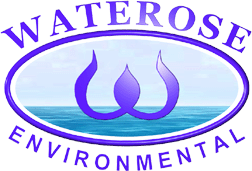 | ||||||
| Articles | Projects | Resume | Cartoons | Windsurfing | Paintings | Album |
Coastal Zone Management
The Implications of Seal Level Rise
on Southern Vancouver Island
Waterose
Index:
- Introduction
- Sea Level Rise as a Coastal Problem
- Assessment and Linkages
- Mitigation
- Conclusion
- References
Section 1. Introduction:
Coastal Zone Management (CZM) is increasing in importance in British Columbia because urban populations are expanding in a complex environment. The coastal zone has three factors that are inter-related: formation and erosion of physical landforms, changing biological ecosystems and developing human communities. The activities of humans often have the greatest impact on the physical and biological elements of the coastal zone, hence it is important to plan human development with an understanding of the relationships between these three factors. The value of CZM is to predict change and to co-ordinate management of land use to achieve the best possible long-term outcome for different interest groups. The primary governance levels include the Province of British Columbia, the Capital Regional District (CRD), and the local communities.
Section 2. Sea Level Rise as a Coastal Problem:
One of the challenges that CZM faces today is to predict the consequences of a possible rise in sea level of one metre over the next hundred years due to global warming. The consequences may alter the land use and patterns of human communities. The management strategies that CZM employs to mitigate the potential consequences vary depending on the locations and the inter-relationships of the three factors.These factors are discussed in three examples on southern Vancouver Island: Witty’s Lagoon Park, Island View Beach and Clover Point.
Section 3. Assessment of Site Locations and Linkages:
The role of CZM is to identify the key factors of each location and how they inter-relate. A similarity of the three sites is that Vancouver Island is an oceanic volcanic island that formed fifty-four million years before present (Yorath, 1995). Subsequently, there have been glacial and interglacial periods that created the land formations at the different site locations. The southern portion of Vancouver Island is rising due to isostatic rebound in the Northern hemisphere which could mitigate the impact of sea-level rise; however, there are areas that could be impacted. The objective of CZM is to assess the implications for each site.Witty’s Lagoon is a nature appreciation park with partially developed urbanization around a salt marsh lagoon habitat with a freshwater creek forming an estuary environment. The assessment is that the impacts of potential sea-level rise at this site are minimal. Witty’s Lagoon is protected by a beach barrier spit that is formed from materials that are eroded from tall cliffs to the west and transported and deposited by the longshore drift wave action. A rise in sea level allows higher energy waves to reach the beach; however, the higher energy waves will also transport sediment from the cliffs so it is unlikely that the spit will be eroded or covered by water. Historically, the shoreline of Witty’s Lagoon was ten metres lower than present day shoreline (Yorath, 1995). The rise in sea level would have an impact on the ecosystem by expanding the salt marsh, providing more habitat for salt tolerant flora and fauna, and less habitat for freshwater marsh grasses. The spit would continue to shelter the salt marsh lagoon habitat which is a wildlife bird sanctuary. The high wave energy inflow and the fresh water outflow from Bilston Creek would continue to move nutrients and phytoplankton. The rise in sea level may have an impact on the availability of the land for human uses including residential use and park land use of Witty’s Lagoon.
Similar to Witty’s Lagoon, the Island View Beach site is a nature appreciation park and a sparsely populated human community. The terrain is a beach matrix of bands of cobble and sands adjacent to tall cliffs that are in various stages of mass wasting. The beach is fed by longshore drift action of the materials from the eroding cliffs. There is a berm for erosion control and an agricultural field with large culvert connected to the beach. The possible implications are flooding of the agricultural field which could form a new salt marsh which would create new habitat for flora and fauna. The increased erosion of the cliffs would feed the beach with sandy sediments. The long term impact of erosion and mass wasting could under cut the cliffs and topple the few houses at the top of the cliffs.
In contrast to Island View Beach and Witty’s Lagoon, Clover Point has a high urban density population. Erosion control devices include the sea wall, shot rock at the base of the cliffs and an artificial offshore reef to reduce incoming wave energy. A rise in sea level would increase the incoming wave energy and undercut the sea wall. In addition, the beach and the protective shot rock at the base of the cliffs would become submerged, the cliff banks would be undercut and the tops of the cliffs could slump causing loss of parkland. Increased salinity and a higher salt spray zone would reduce the habitat for the vegetation that is not salt tolerant and reduce the stabilization of the lower cliff sediments. The mass wasted materials would be moved east along the coast by longshore drift action. The higher wave energy could have a significant impact on the marine communities that are becoming established on the artificial reef offshore.
Section 4. Actions to Mitigate Effects and Parties Responsible for Implementation:
The issues of Witty’s Lagoon and Island View Beach are similar. There are low density residential units adjacent to park zones. The rise in sea level would expand the park areas and potentially pose a risk to residential dwellers. The CZM recommendations for both areas is to permit expansion of the park areas without interference.The expansion of Witty’s Lagoon increases wildlife habitat and the salt marsh acts as a buffer zone. There is no immediate harm to the residents on the spit; however, long term planning should treat the entire spit area as park land. Future development and urban planning by the CRD should design new communities that are placed north of the park land. The residents on the spit may be offered financial compensation by the CRD or ownership of a new residence in any new developments.
Similarly, the possible rise in sea level may flood the agricultural land adjacent to Island View Beach and form a new salt marsh. The salt marsh would be an enhancement to the nature appreciation park. The owner of the agricultural field should be offered financial compensation by the CRD. There is immediate risk to the residents atop the cliffs. The CRD may consider purchasing this area as a buffer zone to enhance the park and minimize risk to future development. Residents in planned communities may enjoy the benefits of coastal zone living without significant risk or economic hardship to protect their property.
In contrast to Island View Beach and Witty’s Lagoon, Clover Point is a high density urban area at high risk. The two unique features of Clover Point that need to be protected are the Clover Point sewage treatment facility and the Ross Bay Cemetary. Consequently, the CRD should priortize this area and protect Clover Point from the possible impacts of a rise in sea level. The artificial reef could be enhanced with the addition of rock to form an offshore barrier against increased wave energy or the base of the sea wall could be protected with the addition of beach sediment. The CRD would bear the burden of the cost to protect the residential community, the park, the sewage treatment facility and the Ross Bay Cemetery.
Section 5. Conclusion:
The key issue for CZM in southern British Columbia is to plan and to protect the users of the coastal zone. The reclamation of coastal salt marshes due to a possible rise in sea level creates additional park land and a buffer zone for planned communities. The high density urban areas require protection while the low density areas require zoning to protect future communities from risk. The CRD must make decisions regarding compensation to residents at risk and funding to build coastal zone protection works. Coast Zone Management can plan today for our future tomorrow.
Section 6. References:
Written for Royal Roads University ES307 Coastal Zone Management SeriesYorath, C.J., and H.W. Nasmith. The Geology of Vancouver Island. A Field Guide. Orca Book Publishers. 1995.

 email Waterose
email Waterose
Please Sign My Guestbook
Please View My Guestbook

| Articles | Projects | Resume | Cartoons | Windsurfing | Paintings | Album |
 | ||||||